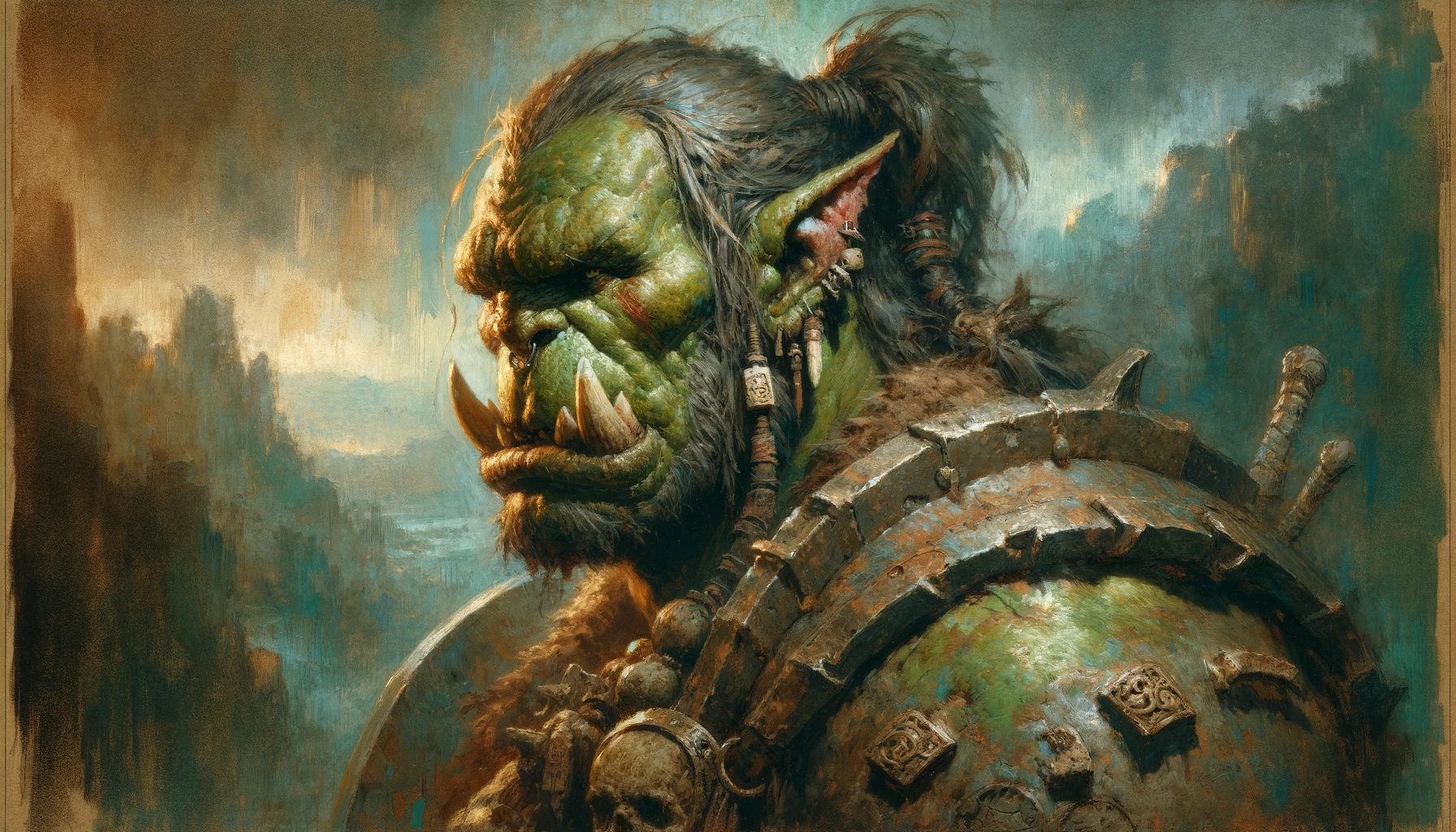Orcs are formidable humanoid creatures known for their incredible strength, endurance, and fierce presence. With their greenish skin, tusk-like teeth protruding from their lower jaws, and muscular builds, Orcs are often seen as the embodiment of the warrior spirit. Though many cultures view them as mere savages or warmongers, Orc societies possess rich traditions that honor strength, valor, and the bonds of clan and family.
Society and Culture
Orc society is tribal, with a strong emphasis on physical prowess and martial achievement as the paths to respect and leadership. Orcs revere the bonds of clan and kinship, with families and tribes forming the cornerstone of their social structure. Their traditions celebrate the stories of legendary warriors and ancestors, often through song, dance, and storytelling around communal fires.
Despite their reputation, Orcs have a deep connection to the natural world, and many tribes practice a form of shamanism, venerating spirits of nature and ancestors. This spiritual practice guides them in matters of war, leadership, and community well-being.
Relations with Other Races
Orcs are often met with suspicion and hostility from other races, stemming from a long history of conflict over territory and resources. However, Orcs capable of overcoming these prejudices find that they can form strong alliances based on mutual respect and shared goals. Orc adventurers are particularly likely to forge such bonds, demonstrating their loyalty, courage, and honor to those who can look beyond their fearsome exterior.
Orc Adventurers
Orc adventurers may seek to prove their strength, gain glory for their clan, or escape the confines of their tribal society’s expectations. In an adventuring party, an Orc can be a fierce warrior, a protective guardian, or a spiritual guide, depending on their skills and inclinations. Their journey is often one of self-discovery, challenging their beliefs and assumptions about the world and their place within it.
Age
Orcs reach adulthood by the age of 12 and live up to 50 years. Their lives are often marked by conflict, which shapes their worldview and societal structures.Alignment
Orcs have a tendency towards chaotic alignments, valuing freedom and strength but are capable of a wide range of moral alignments depending on their clan’s culture and individual beliefs.
Size
Orcs are typically over 6 feet tall and heavily muscled, weighing around 230 to 280 pounds.Your size is medium.
Speed
Your base walking speed is 30 feet.
Your base swimming speed is 15 feet*.
Your base climbing speed is 15 feet*.
* calculated speed.
Languages
You can speak, read, and write: Common, Orc.
Ability Score Increase
- Constitution: +2
- Strength: +1
Skill Proficiency
You have the following skills: Intimidation.
Race Features
Darkvision
Thanks to your orcish heritage, you have superior vision in dark and dim conditions. You can see in dim light within 60 feet of you as if it were bright light, and in darkness as if it were dim light.
Aggressive
As a bonus action, you can move up to your speed towards an enemy of your choice that you can see or hear. This trait embodies the orcish instinct for battle and confrontation.
Powerful Build
You count as one size larger when determining your carrying capacity and the weight you can push, drag, or lift. This trait reflects your enhanced physical strength.
Menacing
You gain proficiency in the Intimidation skill, a testament to your fearsome nature and ability to instill fear in others.
Lore
The Stream
Credits: Game Squires

